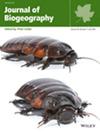Bipolarity and Antitropicality in Marine Taxa: Understanding the Complexities of Latitudinal Distribution
Abstract
Aim
This systematic review aims to analyse the current status of research on marine bipolar and antitropical distribution patterns by exploring temporal trends, studied taxa, inconsistencies in definitions and the extent of molecular evidence in bipolar and antitropical species.
Location
Global marine environments, with a special focus on Polar Regions.
Time Period
1800s to 2024.
Major Taxa Studied
Marine taxa across all phyla, ranging from algae and zooplankton groups to fish and cetaceans.
Methods
A systematic literature search was conducted using Scopus, PubMed and Google Scholar databases. Studies were screened for relevant publications of marine taxa displaying bipolar or antitropical distributions, and data were extracted in order to perform a numerical summary of aspects including temporal trends, taxa representation and agreement with this article's standardised definitions. Additional data were gathered from The Arctic Register of Marine Species (ARMS) and The Register of Antarctic Marine Species (RAMS) databases. Distribution data were then extracted to verify the potential bipolarity of species present in both databases.
Results
From 221 articles, 665 marine taxa records were extracted, of which 517 records were categorised as antitropical and 148 as bipolar. Molecular evidence existed for 25% of non-paleontological records. A considerable amount of records (44%) did not match the definitions used in this review. The data taken from ARMS and RAMS revealed 408 shared species, of which 41 species were listed as bipolar by the literature collected in this study.
Main Conclusions
Marine bipolarity and antitropicality have been topics of interest since the 1800s, especially between 2008 and 2017. However, the discrepancy between the number of potentially bipolar species in publicly available species databases and literature-based estimates underscores the need for further research of neglected taxa. Future research should prioritise including molecular evidence, transparent terminology and interdisciplinary approaches to address the complexities of marine disjunct distributions.


 求助内容:
求助内容: 应助结果提醒方式:
应助结果提醒方式:


